
The 29th Flying Training Wing is an inactive United States Air Force unit last based at Craig Air Force Base, Alabama. It was inactivated when Craig was closed when the Air Force reduced its pilot training program after the Vietnam War.
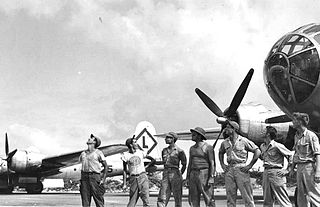
The 331st Bombardment Group is an inactive United States Air Force unit. It was last assigned to the 315th Bombardment Wing, being stationed at Northwest Field, Guam. It was inactivated on 15 April 1946.

The 346th Bombardment Group is a former United States Army Air Forces unit. It was last assigned to the 316th Bombardment Wing at Kadena Airfield, Okinawa, where it was inactivated on 30 June 1946. The group was originally a heavy bomber training unit, but was inactivated in a general reorganization of Army Air Forces training units in 1944. It was reorganized as a Boeing B-29 Superfortress group later that year. It moved to Okinawa in 1945, but arrived too late to participate in combat.
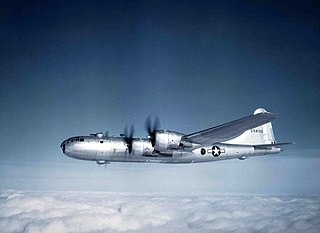
The 383d Bombardment Group is a former United States Army Air Forces unit. It was last stationed at Camp Anza, California, where it was inactivated on 4 January 1946. The group was active from 1942 to 1944 as a heavy bomber training unit. It was reorganized as a very heavy bomber unit and trained for deployment overseas. However, it arrived at its overseas station too late to see combat, and returned to the United States, where it was inactivated.

The 15th Special Operations Squadron is part of the 1st Special Operations Wing at Hurlburt Field, Florida. It operates Lockheed MC-130H Combat Talon II aircraft in support of special operations.

The 819th Bombardment Squadron is an inactive United States Air Force unit. Its last assignment was with the 30th Bombardment Group at Kahuku Army Air Field, Hawaii, where it was inactivated on 30 November 1945.
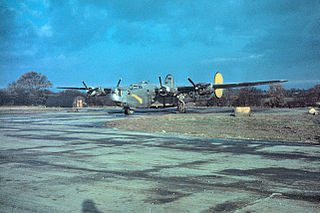
The 847th Bombardment Squadron is a former United States Army Air Forces unit that was originally activated as the 421st Bombardment Squadron. Its last assignment was with the 489th Bombardment Group at Great Bend Army Air Field, Kansas where it was inactivated on 28 March 1945. As the 20th Antisubmarine Squadron, the squadron performed antisubmarine patrols in 1942 and 1943. After reforming as a heavy bomber squadron, it engaged in the strategic bombing campaign against Germany in the European Theater of Operations until returning to the United States in late 1944. The squadron was inactivated while its parent group was training as a very heavy bombardment unit.
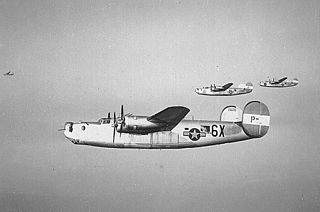
The 855th Bombardment Squadron is an inactive United States Air Force unit. The squadron was first activated as the 522d Bombardment Squadron at Lantana Airport, Florida, in October 1942, when it assumed the personnel and equipment of a National Guard unit engaged in antisubmarine warfare over the Atlantic. The squadron continued antisubmarine patrols as the 17th Antisubmarine Squadron until the summer of 1943, when its mission was transferred to the Navy.

The 863rd Bombardment Squadron is a former United States Army Air Forces unit. It was first organized as the 518th Bombardment Squadron in October 1942, when it replaced a National Guard unit participating in antisubmarine patrols off the Atlantic coast, becoming the 13th Antisubmarine Squadron in November. When the Navy took over the coastal antisubmarine mission in August 1943, the squadron moved to the western United States, where it formed the cadre for the 493rd Bombardment Group and was redesignated as the 863rd. It moved to England in the spring of 1944 and participated in the strategic bombing campaign against Germany until April 1945. It returned to the United States and was inactivated in August 1945.

The 362d Tactical Electronic Warfare Squadron is an inactive United States Air Force unit. It was last assigned to the 6498th Air Base Wing at Da Nang Air Base, Republic of Vietnam. It was inactivated on 28 February 1973.

The 920th Air Refueling Squadron is an inactive United States Air Force unit. It was last assigned to the 379th Bombardment Wing at Wurtsmith Air Force Base, Michigan where it was inactivated on 30 September 1992.

The 461st Bombardment Squadron is an inactive United States Air Force unit. Its last assignment was with 346th Bombardment Group at Kadena Airfield, Okinawa, where it was inactivated on 30 June 1946. From 1942 the squadron served as a replacement training unit for heavy bomber aircrews. It was inactivated in the spring of 1944 in a general reorganization of Army Air Forces training units. The squadron was activated again in 1944 as a Boeing B-29 Superfortress unit. Although it deployed to the Pacific, it arrived too late to see combat service.
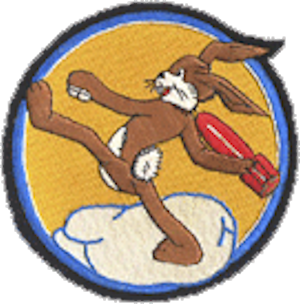
The 463d Bombardment Squadron is an inactive United States Air Force unit. Its last assignment was with 346th Bombardment Group at Kadena Airfield, Okinawa, where it was inactivated on 30 June 1946. From 1942 the squadron served as a replacement training unit for heavy bomber aircrews. It was inactivated in the spring of 1944 in a general reorganization of Army Air Forces training units. The squadron was activated again in 1944 as a Boeing B-29 Superfortress unit. Although it deployed to the Pacific, it arrived too late to see combat service.

The 872nd Bombardment Squadron is the former name of the 872nd Air Expeditionary Squadron, a provisional unit of the United States Air Force. It is assigned to United States Air Forces Europe to activate or inactivate as needed.

The 464th Bombardment Squadron is an inactive United States Air Force unit. Its last assignment was with 382d Bombardment Group at Camp Anza, California, where it was inactivated on 4 January 1946. From 1942 the squadron served as a replacement training unit for heavy bomber aircrews. It was inactivated in the spring of 1944 in a general reorganization of Army Air Forces training units. The squadron was activated again in 1944 as a Boeing B-29 Superfortress unit.
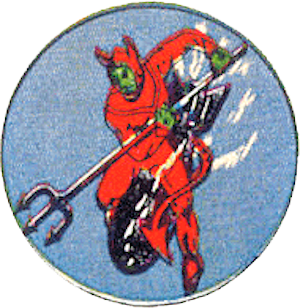
The 420th Bombardment Squadron was unit in the United States Army Air Forces. Its last assignment was with 382d Bombardment Group stationed at Camp Anza, California. It was inactivated on 4 January 1946 without seeing combat.

The 788th Tactical Fighter Squadron is an inactive United States Air Force unit. During World War II, as the 788th Bombardment Squadron, it was assigned to the 467th Bombardment Group as a Consolidated B-24 Liberator squadron in 1943. After training in the United States, it moved to the European Theater of Operations the following year. It saw combat until the surrender of Germany in May 1945, earning a French Croix de Guerre with Palm for its actions contributing to the liberation of France. From May to August 1944, the squadron was detached to the 801st Bombardment Group (Provisional) engaging in Operation Carpetbagger operations. After V-E Day, the squadron returned to the United States and transitioned into the Boeing B-29 Superfortress It was inactivated on 4 August 1946 at Clovis Army Air Field, New Mexico.

The 789th Tactical Fighter Squadron is an inactive United States Air Force unit. During World War II, as the 789th Bombardment Squadron, it was assigned to the 467th Bombardment Group as a Consolidated B-24 Liberator squadron in 1943. After training in the United States, it moved to the European Theater of Operations the following year, where it participated in the strategic bombing campaign against Germany. It saw combat until the surrender of Germany in May 1945. After V-E Day, the squadron returned to the United States and transitioned into the Boeing B-29 Superfortress It was inactivated on 4 August 1946 at Clovis Army Air Field, New Mexico.

The 790th Bombardment Squadron is a former United States Army Air Forces unit, established as a Consolidated B-24 Liberator squadron in 1943. After training in the United States, it moved to the European Theater of Operations the following year. During World War II it was assigned to the 467th Bombardment Group, and engaged in the strategic bombing campaign against Germany. After V-E Day, the squadron returned to the United States and transitioned into the Boeing B-29 Superfortress. It was inactivated on 4 August 1946 at Clovis Army Air Field, New Mexico in March 1946 and its resources were transferred to another unit.

The 791st Bombardment Squadron is a former United States Army Air Forces unit. During World War II it was assigned to the 467th Bombardment Group, and engaged in the strategic bombing campaign against Germany. After V-E Day, the squadron returned to the United States and transitioned into the Boeing B-29 Superfortress. It was inactivated on 31 March 1946 at Roswell Army Air Field, New Mexico in March 1946 and its resources were transferred elsewhere.



















